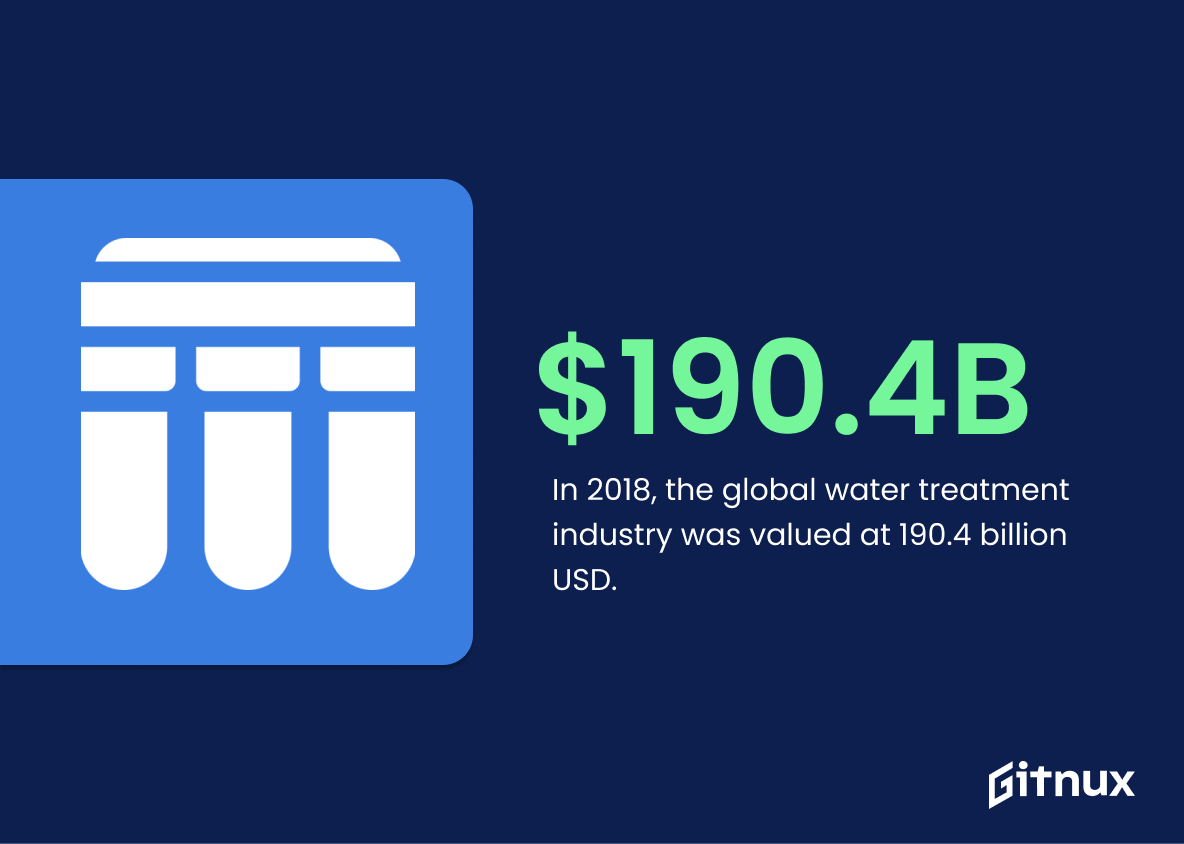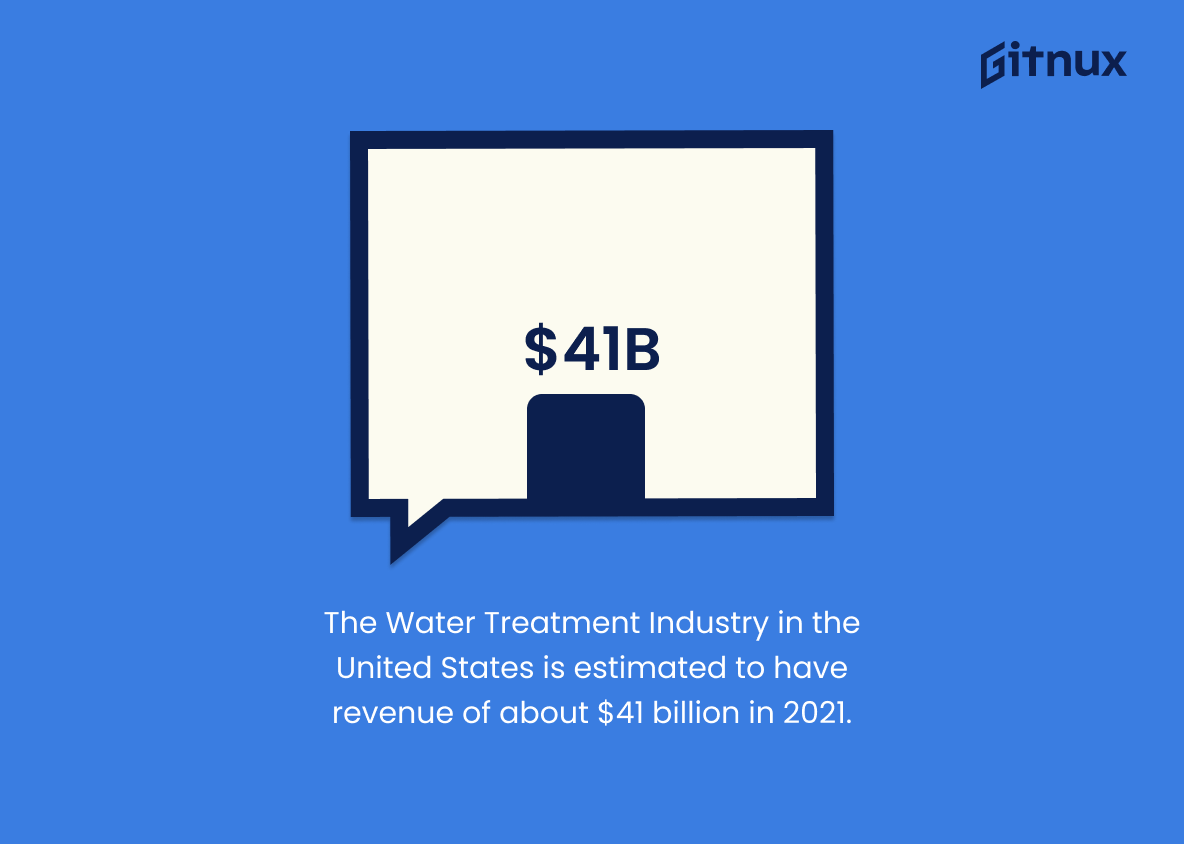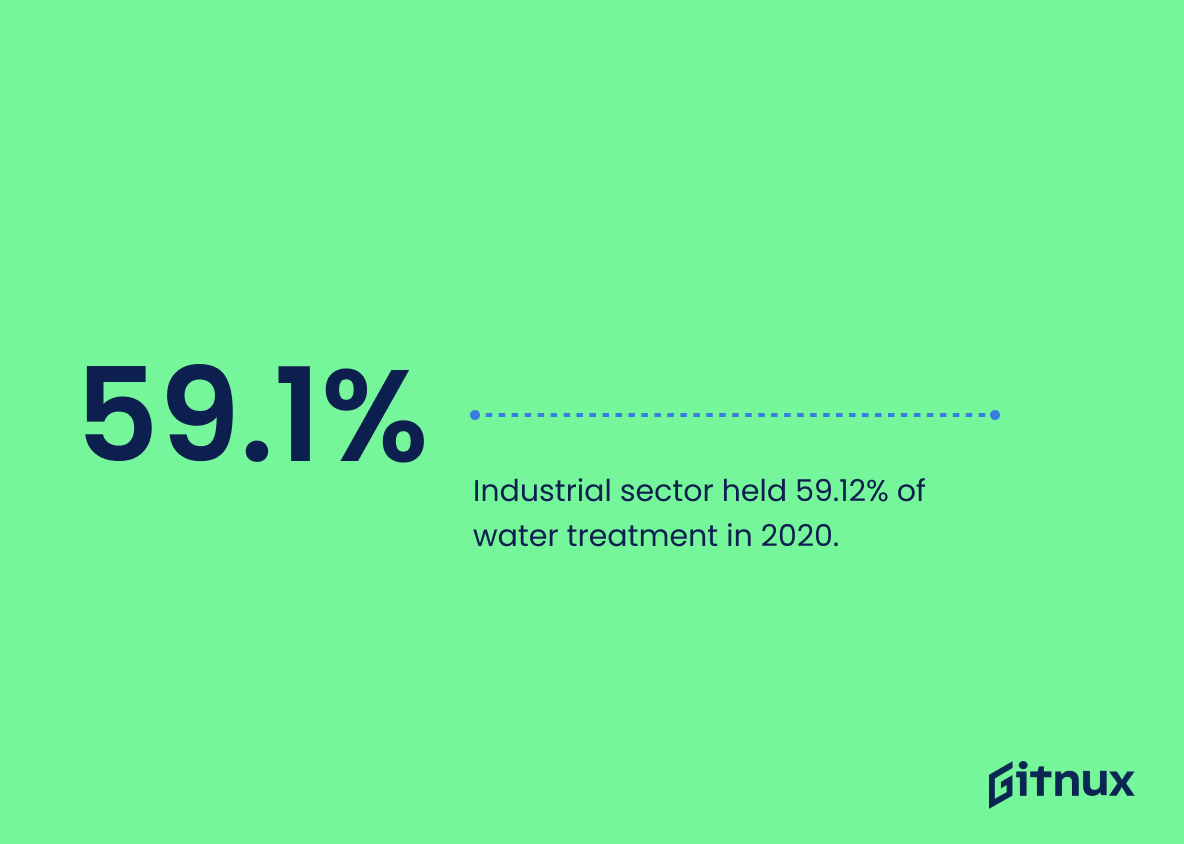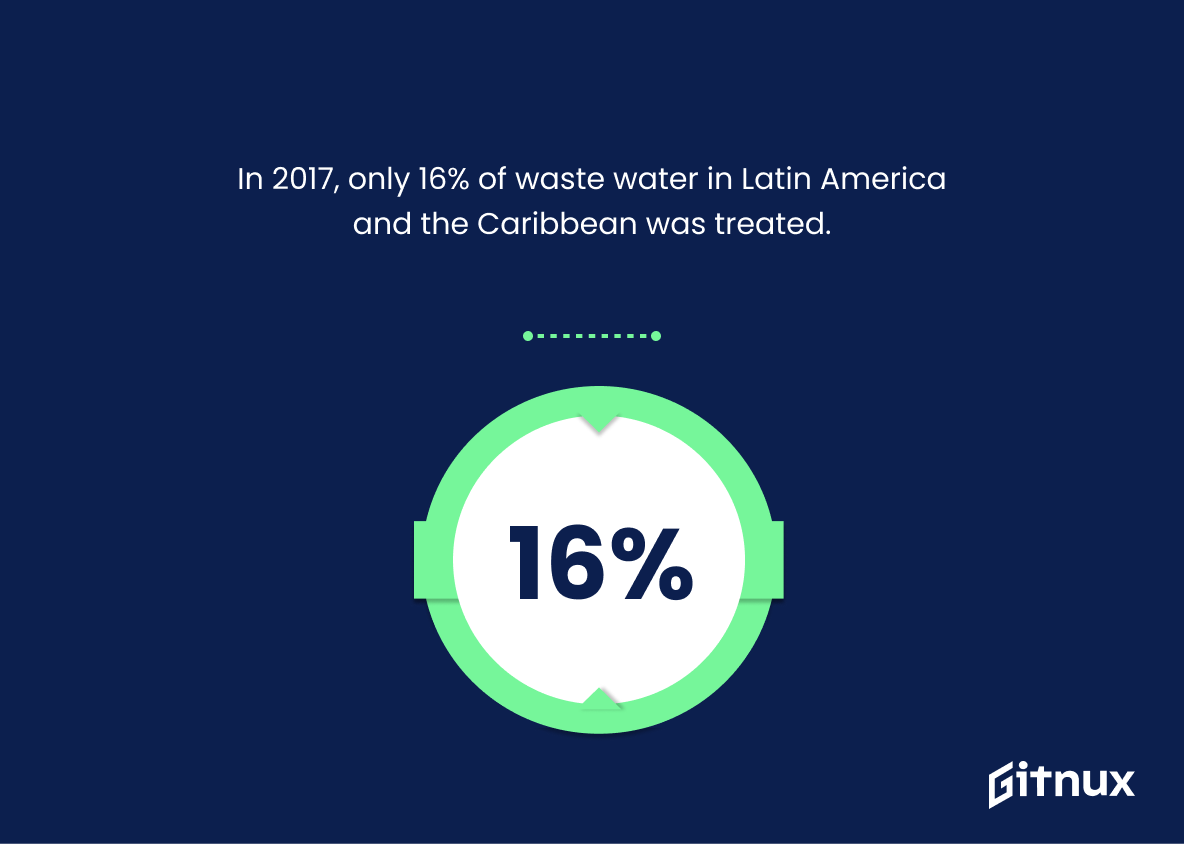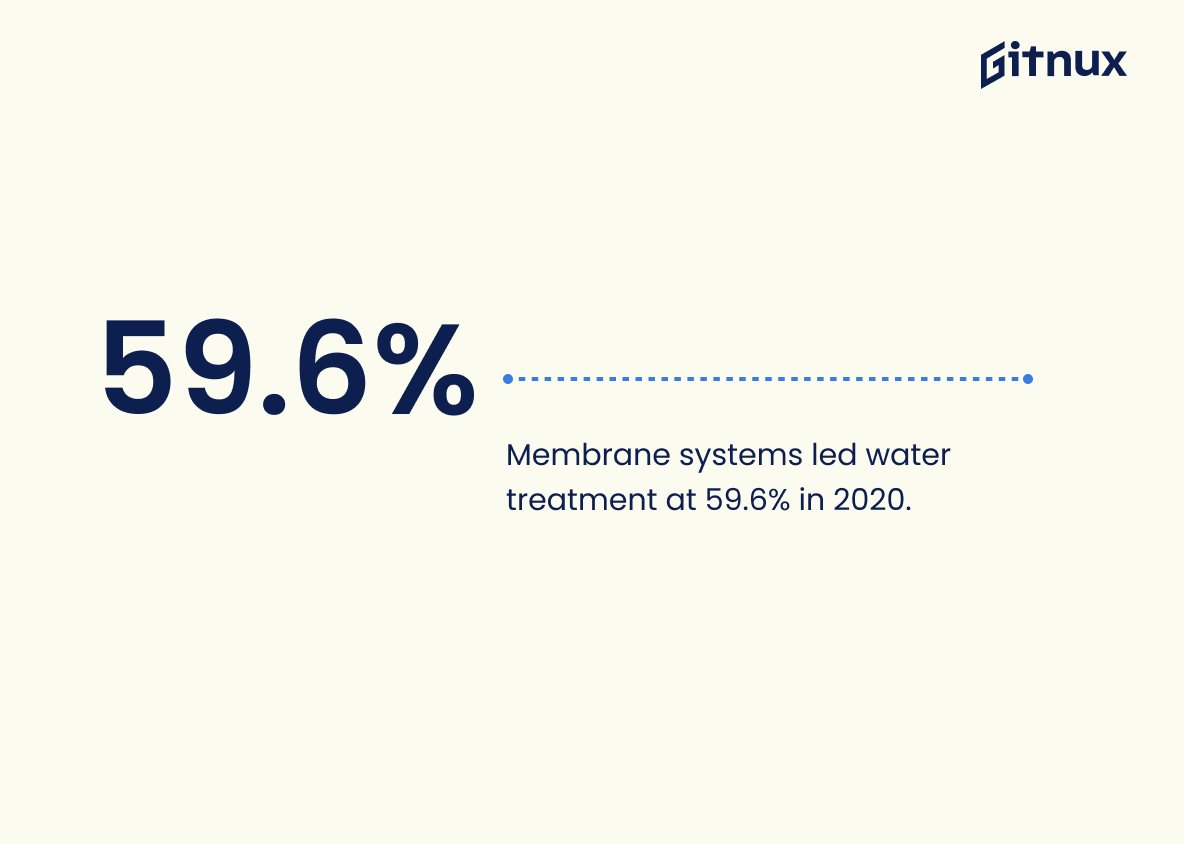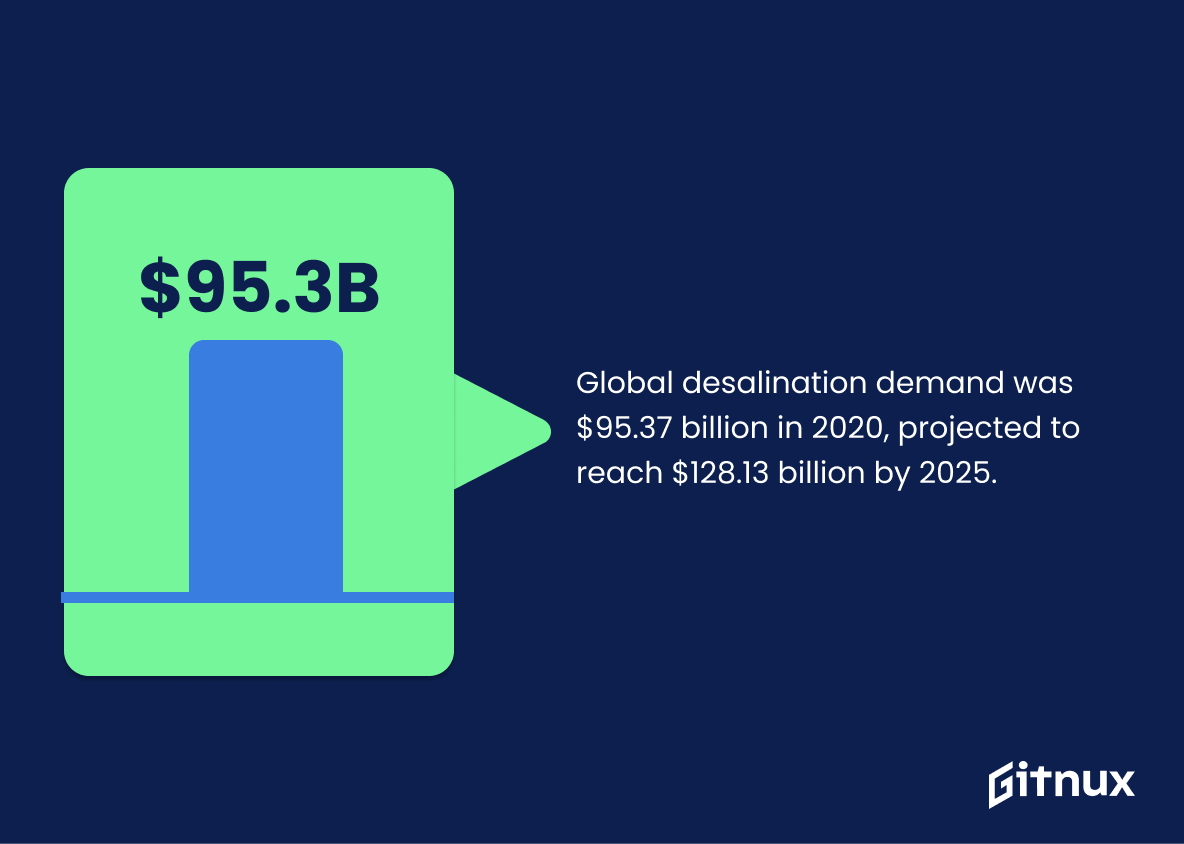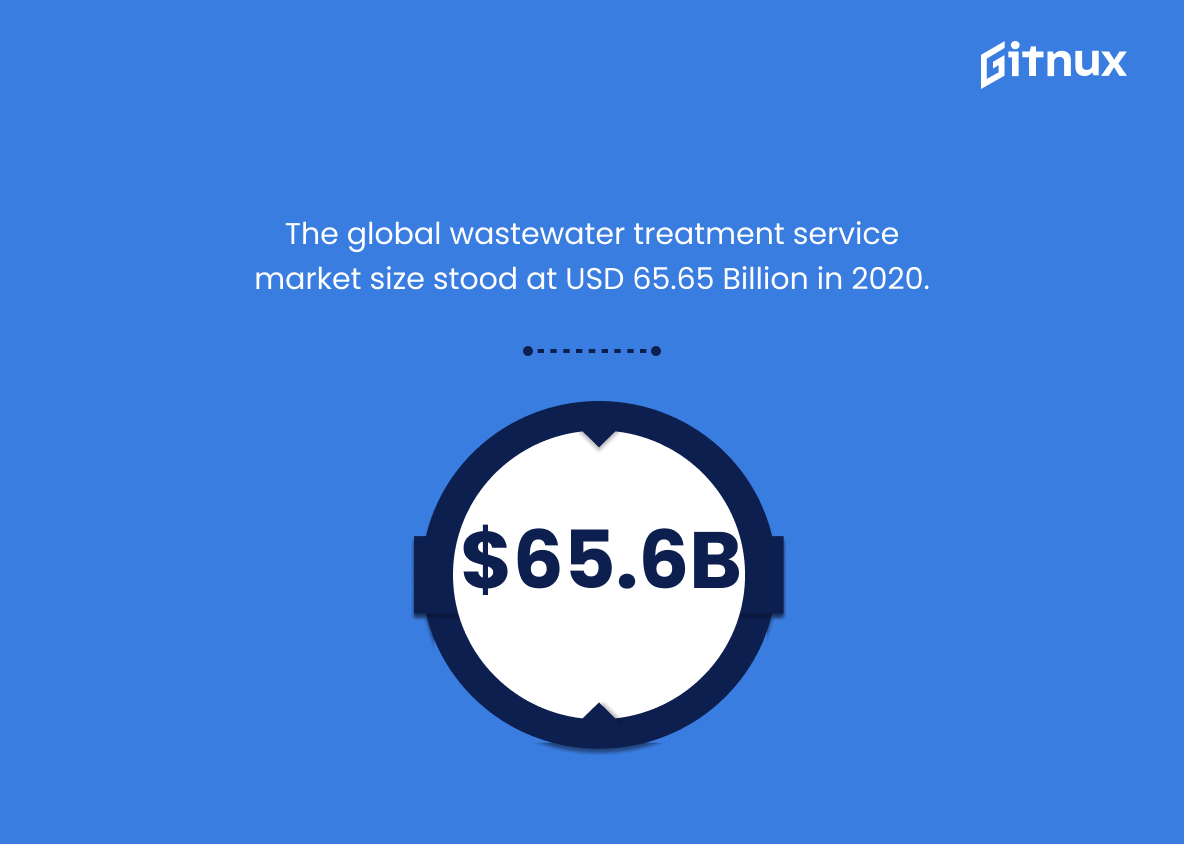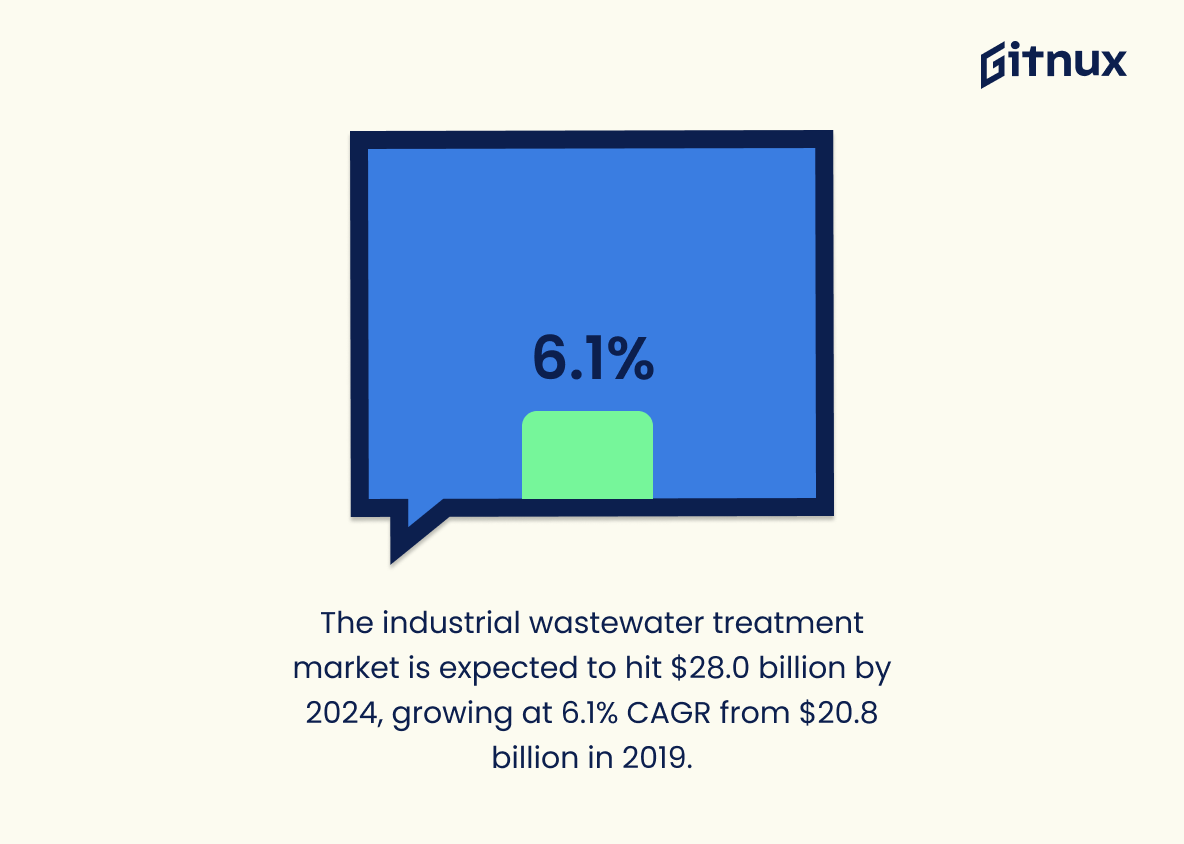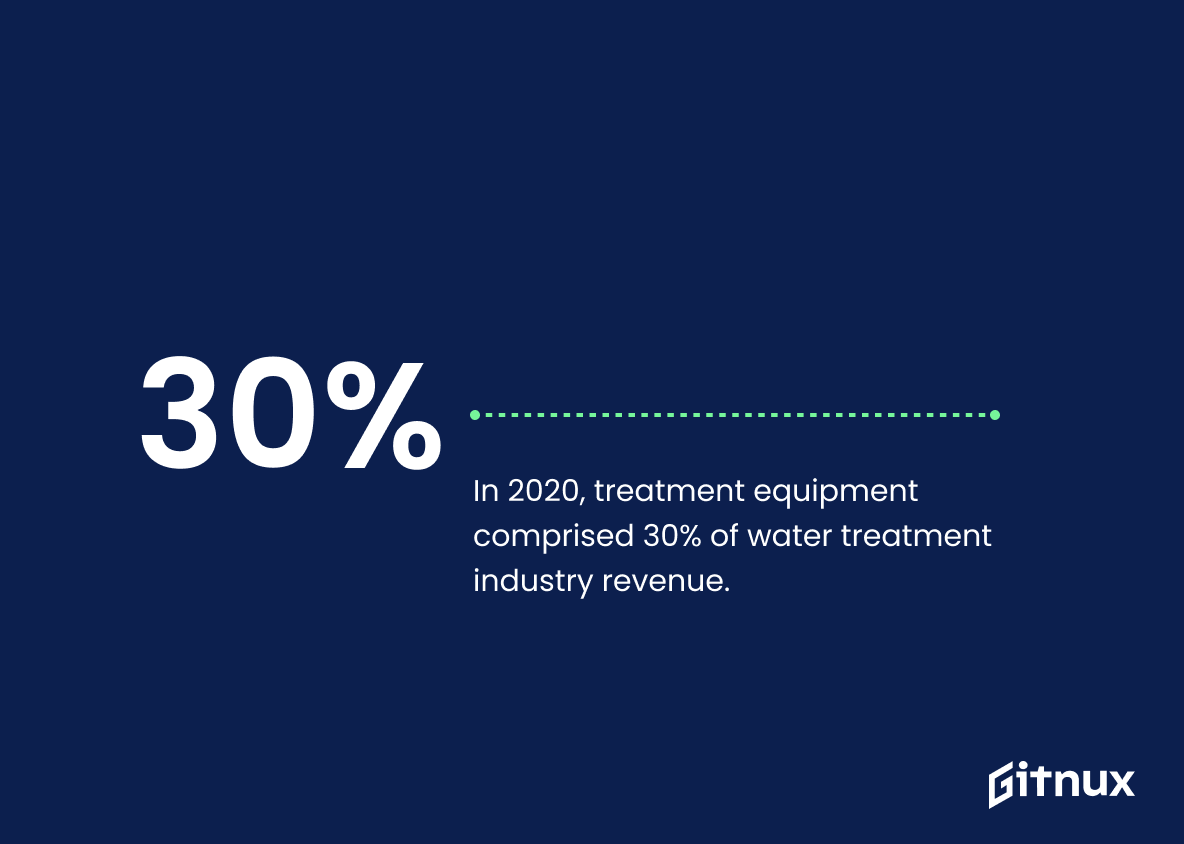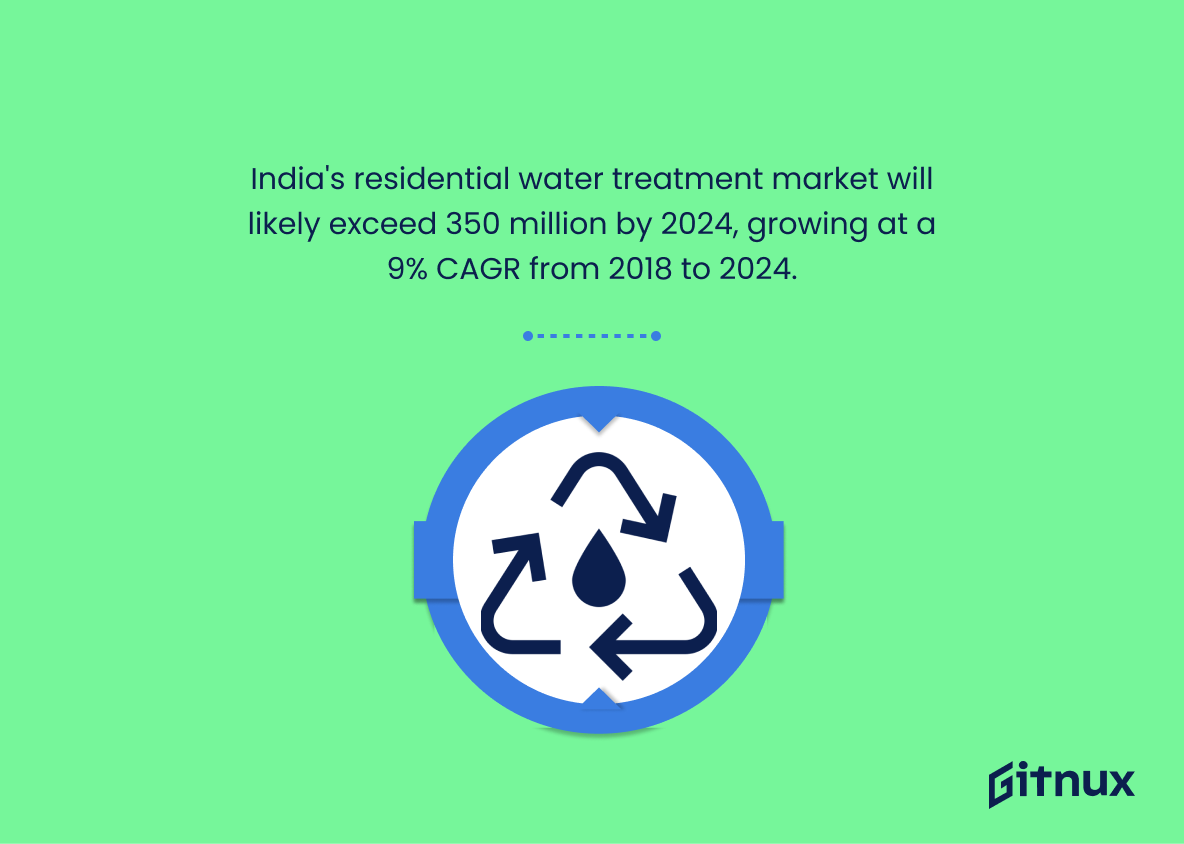Water is the lifeblood of our planet, vital for survival and growth of all living organisms. Ensuring its purity and safety is of paramount importance. The water treatment industry steps in here, playing a crucial role in managing and optimizing our water resources. The dynamic spectrum of its operations and impacts is quantified through various industry statistics. This blog post aims to delve into the intriguing world of the water treatment industry, providing an in-depth analysis of its key statistics. We’ll explore trends, growth projections, market influences and a multitude of data, offering a comprehensive understanding of where this pivotal industry stands today and where it’s heading tomorrow.
The Latest Water Treatment Industry Statistics Unveiled
In 2018, the global water treatment industry was valued at 190.4 billion USD.
Drawing upon this crucial piece of information, we can paint a picture of the tremendous scale and importance of the global water treatment industry. The towering figure of 190.4 billion USD ascribed to its value in 2018 paints a picture of a thriving sector experiencing substantial growth. This remarkable value benchmark is not only indicative of the growing significance of water treatment in our day-to-day lives, but it also hint towards the potential lucrative opportunities for business in this rapidly evolving industry. Furthermore, this number lays a concrete foundation for tracking industry growth over the years, offering meaningful comparison points to assess its progression and potential.
The Water Treatment Industry in the United States is estimated to have revenue of about $41 billion in 2021.
Delving into the vicissitudes of the Water Treatment Industry, an astounding fact leaps forward – the estimated revenue for 2021 hitting around $41 billion. This expansive fiscal measure not only underlines the magnitude and vibrancy of this industry within the United States, but serves as a testament to its critical role in the modern and ever-developing societies.
Peeling back the layers, this figure provides insights into a multitude of underlying implications. It highlights the growing consumer consciousness and the escalating demand for clean, safe water. Simultaneously, it offers an insight into the heightened investment in advanced filtration techniques, innovative solutions, and the inexhaustible commitment to ensure the provision of potable water to every household.
Finally, this financial milestone bears witness to the economic importance of the industry. Influencing job creation, innovation, and contributing substantially to the country’s GDP, the Water Treatment Industry has proven to be more than just a purveyor of clean water. Drawing these threads together, the $41 billion revenue illuminates not just an industry, but the interplay of economics, societal needs, and technological advancements within the United States.
Industrial sector dominated the water treatment industry, accounting for 59.12% share in 2020.
Illustrating the predominance of the industrial sector in the water treatment industry with a staggering 59.12% stake in 2020 helps underscore the intimate relationship between industrial progress and water treatment requirements. It highlights how vital this industry is in supporting and facilitating sustainable industrial growth. Moreover, this powerful statistic paints a vivid portrait of potential market opportunities and growing trends for industries and investors eyeing the sector, therefore serving as a robust guiding compass pointing towards lucrative avenues in the water treatment industry.
By 2025, the global water management services market for the oil and gas industry is expected to reach $34.04 billion.
The projection of the global water management services market for the oil and gas industry reaching $34.04 billion by 2025 serves to illuminate the immense growth potential within the Water Treatment Industry. To place the scope and significance into perspective, this prediction not only indicates a colossal economic opportunity for stakeholders involved, but also underscores an increasing industrial awareness towards water conservation. This is integral towards building a sustainable future, bridging the gap between industry and environmental responsibility. Therefore, within the blog post, this figure doesn’t just present a statistic, but paints a vivid picture of immense growth blended with heightened ecological considerations, setting the stage for transformative advancements in the Water Treatment Industry.
In 2017, only 16% of waste water in Latin America and the Caribbean was treated.
Highlighting the surprising data from 2017 that merely 16% of wastewater in Latin America and the Caribbean underwent treatment, serves as a clarion call for the immense scope and need for growth in the water treatment industry in these regions. This glaring gap underscores potential opportunities for investment, technological innovation and infrastructural development. Not only does it hint at the environmental challenges present, but also illuminates the economic potential that proper waste water management can unlock.
In 2022, the bottled water processing machine market is projected to reach $310.5 billion.
Highlighting this forecast for the 2022 bottled water processing machine market provides an informed glimpse into the future health of the Water Treatment Industry. A projection of $310.5 billion is not a figure to overlook—it underscores the growing demand and increasing worth of water treatment solutions. Essentially, this contributes to the narrative of a resilient and expanding industry. The net worth alone casts a promising glow on the prospects of investment and the potential of innovative advancements. It invites industry leaders, prospective investors, and innovators alike to participate and contribute towards this thriving sector. This statistic, in essence, paints a lucid picture of the industry’s strength and vitality.
The Mobile Water Treatment Systems Market size was over USD 870 Million in 2016 and is forecasted to reach USD 1,250 Million by 2024.
Delving into the compelling narrative of the Water Treatment Industry’s Statistics, one can’t help but observe the sweeping evolution of the Mobile Water Treatment Systems Market. A profound leap from a net worth of over USD 870 Million in 2016 to a projected value reaching up to USD 1,250 Million by 2024 unearths a tale of exponential growth and innovation.
This statistic offers a solid testament to the rising potential and opportunities within the sector. It’s akin to a beacon, shedding light on the escalating demand and acceptance of mobile water treatment solutions globally. Moreover, this escalated progression underscores the market’s resilience and adaptability, having navigated the profound shifts in environmental regulations and technological advancements, thereby making it an intriguing focal point in our discourse on Water Treatment Industry Statistics.
Membrane-based systems dominate the water treatment systems market with a share of 59.6% in 2020.
In the vast ocean of data surrounding water treatment industry statistics, one fact stands out like a beacon in the night – Membrane-based systems held a whopping 59.6% market share in 2020. This singular statistic is far from murky. Rather, it brings the industry’s landscape into sharp focus, acting as a reflection of prevailing trends and preferences within the sector. This towering percentage underscores the dominance of membrane technologies, hitting a high note in the industry’s symphony of statistics.
By understanding the sovereignty of membrane-based systems, industry players can pinpoint where the majority of investment is funneled. Furthermore, this figure can serve as a reliable compass for manufacturers, guiding them towards market preferences and enabling them to navigate the waters of competition with informed strategy. Hence, this bit of data is nothing short of an essential buoy for those swimming in the aquatic world of the water treatment industry.
Global demand for desalination was 95.37 billion USD in 2020 and it’s expected to reach to 128.13 billion USD by 2025.
Unveiling the promising growth of desalination, an astounding leap from 95.37 billion USD in 2020 to a projected 128.13 billion USD by 2025 showcases the escalating importance and dependence on this prevalent water treatment process. Integral to the Water Treatment Industry, this rise in demand signals the increasing global reliance on technology to support water scarcity issues, transform brackish bodies into consumable water sources, and ensure sustainable, potable water supplies for burgeoning populations and industries. Intriguingly, this surge underlines the myriad investment opportunities, potential for technological innovations, and scope for economic growth within the Water Treatment Industry itself.
The global wastewater treatment service market size stood at USD 65.65 Billion in 2020.
Diving deep into the realm of water treatment industry statistics, one such figure stands out strikingly – the substantial global wastewater treatment service market size which, in 2020, made a reverberating splash at USD 65.65 Billion. Such a hefty figure not only underscores the monumental scale of this industry but also indicates its global significance, the importance of the services it provides, and the vast investment involved. Operating as a lighthouse in vast seas of information, this statistic guides us to comprehend the critical role of this sector in public health and environmental protection, reaffirming the attention and resources it rightfully deserves.
The market size of the Water Treatment Chemicals Industry in the UK was $1.4 billion in 2022.
Highlighting that the UK Water Treatment Chemicals Industry hit a whopping $1.4 billion in market size in 2022 is an important milestone deserving attention. This numeric signpost operates as a financial barometer indicating the growth and economic relevance of this sector. Such insights become the pulse that drives strategic planning for businesses, influencing global market dynamics and decision-making amongst venture investors, entrepreneurs, and policy-makers. In the realm of a blog post about Water Treatment Industry Statistics, this statistic functions as a compelling character in the industry’s unfolding narrative, a testament to its robust health and potential for continued prosperity.
The industrial wastewater treatment service market is projected to reach USD 28.0 billion by 2024 from USD 20.8 billion in 2019, at a CAGR of 6.1%.
As we dive into the riveting world of Water Treatment Industry Statistics, it’s worth pausing to fully absorb the powerhouse potential of the industrial wastewater treatment service market. Imagine its value swelling like a mighty river from USD 20.8 billion in 2019 to a roaring USD 28.0 billion by 2024. This isn’t a lazy stream, instead, it’s charging forward at a Compound Annual Growth Rate (CAGR) of 6.1%. The profound impact of this growth modifies the landscape of the water treatment industry, taking it from a gentle brook to a formidable waterfall. It not only underscores an increased demand for wastewater treatment services but also offers glimpses of promising investment and business potentials within the industry. So, as you navigate the fascinating currents of the water treatment industry, remember this: the rapid current represented by a 6.1% CAGR is a clear sign this sector is a force to be reckoned with among global markets.
In 2020, treatment equipment accounted for around 30% of the total water treatment industry revenue.
Highlighting that treatment equipment accounted for about 30% of the total water treatment industry revenue in 2020 is crucial. It cleverly elucidates the significance of this niche within the broader industry framework. It’s akin to saying that nearly a third of the industry’s earnings stem from this sub-domain, further establishing the compelling role that treatment equipment plays in the landscape. This underscores the potential investment opportunities available in the treatment equipment sector, while simultaneously emphasizing its contribution to the overall industry health and profitability.
The total capacity of wastewater treatment facilities in China increased to more than 200 million cubic meters per day in 2019.
Highlighting the colossal rise in wastewater treatment capacity in China to over 200 million cubic meters per day in 2019 illuminates the remarkable growth and development within the Water Treatment Industry. This number serves as a benchmark that underscores the industry’s potential and significantly demonstrates how investments and advancements in technology can yield incredible results in handling water wastes. This is particularly crucial in the context of blog posts about Water Treatment Industry Statistics, as it contributes to a better understanding of industry trends, shaping future strategies and fostering global discussions about efficient water management.
The residential water treatment market in India is expected to reach more than 350 million by 2024 with a CAGR of around 9% from 2018 to 2024.
The diagram of progress painted by this statistic reflects the escalating potential of India’s residential water treatment market. By catching the wave up to a worthwhile 350 million by 2024, the realm is demonstrating a compelling Compound Annual Growth Rate (CAGR) of roughly 9% from 2018 to 2024. The color of this data point in the blog post offers a crucial perspective to the readers about the promising growth and lucrative opportunities existing in the water treatment industry. It unfurls the unseen canvas of India’s indispensability in shaping the course of the industry’s global potential. This data, therefore, serves as an eye-opening reference, prompting players and stakeholders to innovate, invest, and incite actions in this booming domain.
Out of the total municipalities in South Africa, only 64% have sewage treatment facilities.
Shining a spotlight on South Africa, where a notable 64% of municipalities are equipped with sewage treatment facilities, underscores the transformative potential within the water treatment industry. This statistic not only paints an overarching picture of the current state of infrastructural development in the country, but it also highlights the looming opportunity for expansion in this critical sector. Given that a significant 36% of municipalities lack such facilities, there is a vast potential for growth and investment in the water treatment industry. Inextricably linked to public health and environmental sustainability, this expansion could make a consequential difference not just in numbers, but in a demonstrable quality of life and ecological balance.
The water treatment chemicals market in South East Asia is expected to grow at a CAGR of over 5% to reach a valuation of over US$ 4.5 Bn by the end of the forecast period.
As we navigate through the complexities of the Water Treatment Industry, this particular statistic serves as a beacon, highlighting the significant growth trajectory mapped out for the water treatment chemicals market in South East Asia. An anticipated Compound Annual Growth Rate (CAGR) of over 5% signifies robust economic health and progressive market trends for the region. Setting sights at the end of the forecast period, we are looking at a staggering valuation of over US$ 4.5 Bn. Both these indicators together reflect not only the compelling vitality and potential held by this market, but also the extensive possibilities they unveil for stakeholders within the industry. This economical forecast propels us forward into a future shaped by progressive innovation and widespread market opportunities in the water treatment industry.
Conclusion
In essence, the water treatment industry plays a vital role in ensuring our planet remains sustainable and healthy for future generations. The statistics presented in this article underscore the tremendous growth and expansion the sector has seen over recent years. Increased awareness regarding water pollution and scarcity, industry innovation, and regulatory shifts are some key factors driving this growth. Still, there’s a lot of work to be done. As we continue to face new environmental challenges and population growth, the demand for advanced water treatment solutions will invariably rise. Hence, the water treatment industry’s significance will only grow with time, paving the way for a healthier and cleaner future. Investing in this sector is not just a business decision; it’s a commitment to sustainable development and global wellbeing.
References
0. – https://www.www.statista.com
1. – https://www.www.marketsandmarkets.com
2. – https://www.www.southafricanmi.com
3. – https://www.www.futuremarketinsights.com
4. – https://www.www.fortunebusinessinsights.com
5. – https://www.www.verifiedmarketresearch.com
6. – https://www.www.unwater.org
7. – https://www.www.prnewswire.com
8. – https://www.www.bizvibe.com
9. – https://www.www.businesswire.com
10. – https://www.www.ibisworld.com
11. – https://www.www.alliedmarketresearch.com
12. – https://www.www.gminsights.com
13. – https://www.www.globenewswire.com
